- IB
- AHL 4.19—Transition matrices – Markov chains
Practice AHL 4.19—Transition matrices – Markov chains with authentic IB Mathematics Applications & Interpretation (AI) exam questions for both SL and HL students. This question bank mirrors Paper 1, 2, 3 structure, covering key topics like core principles, advanced applications, and practical problem-solving. Get instant solutions, detailed explanations, and build exam confidence with questions in the style of IB examiners.
A system transitions between states , and with transition matrix:
Find an eigenvector corresponding to the eigenvalue .
Using part (a), determine the long-term probability of being in state Y.
A network of paths connects four nodes, A, B, C, and D, as shown:
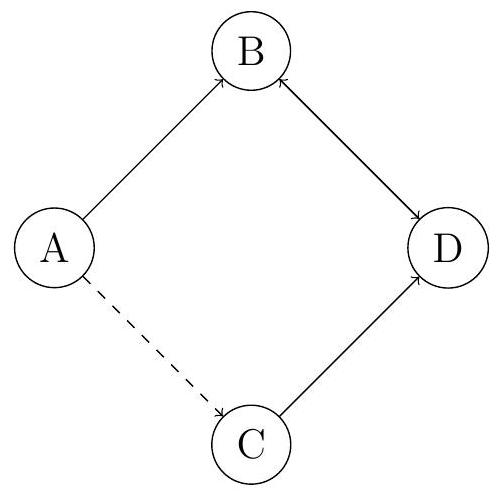
Dashed lines indicate paths that are twice as likely to be chosen.
Construct the transition matrix for a particle moving between the nodes.
Find the steady-state probability distribution using a graphic display calculator.
Explain one limitation of this model in the context of path selection.
A zoo has three habitats, H, I, and J, connected as shown:
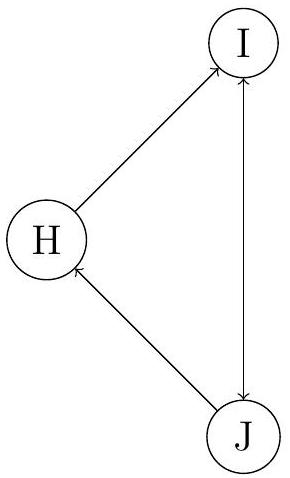
An animal moves between habitats with equal probability for each available path.
Write down the transition matrix.
If the animal starts in habitat H , find the probability it is in habitat J after three moves.
Find the long-term probability of the animal being in habitat I.
A Markov chain models a system with states , and M , with transition matrix:
Find the steady-state distribution.
If the system starts in state K , find the expected number of steps to reach state M for the first time.
A Markov chain models a process with states , and G , with transition matrix:
Verify that is a valid transition matrix.
Express as , finding matrices and .
A game involves a player moving between states , and D , with transitions shown:
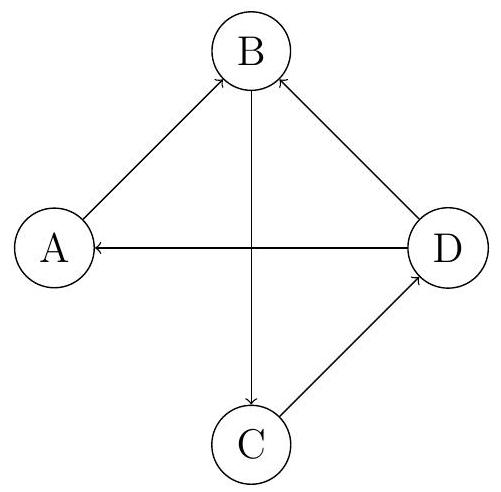
The player moves with equal probability to each connected state.
Write down the transition matrix.
Find the steady-state probability vector.
Find the minimum number of moves for the player to be at least certain of reaching state D , starting from A .
A biologist models animal migration between three regions, , and M , with some paths preferred (dashed lines, twice as likely):

Construct the transition matrix.
Find the steady-state distribution.
If the animal starts at K , find the probability it is at M after two moves.
A robot navigates a grid with states , and S , connected as follows:
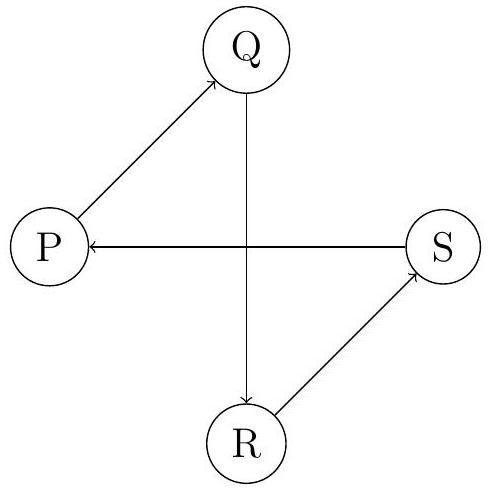
The robot moves with equal probability to each connected state.
Write down the transition matrix.
Find the probability of being in state S after four transitions, starting from P.
Determine the expected number of steps to return to P , starting from P.
A network of tunnels connects four chambers labeled , and S . A robotic explorer moves between these chambers. When leaving a chamber, it selects an available tunnel with equal probability. The time between entering and leaving a chamber is constant for all transitions. The tunnel connections are represented by the following directed graph:
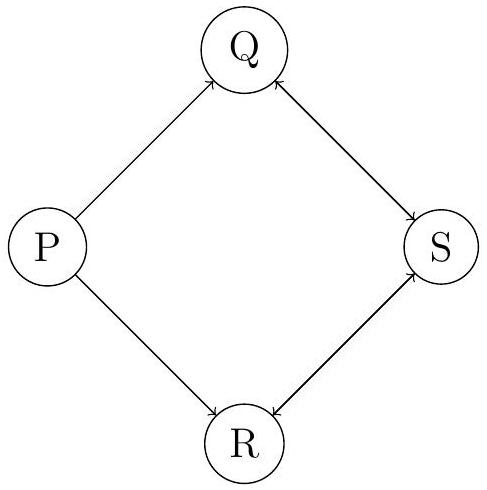
Construct the transition matrix for the robotic explorer's movement.
Find the steady-state probability distribution for the chambers.
Determine the probability that the explorer is in chamber Q after a long time.
A system transitions between states , and G with transition matrix:
Find the probability of transitioning from E to G in two steps.
Express as , where is a diagonal matrix. Find matrices and .